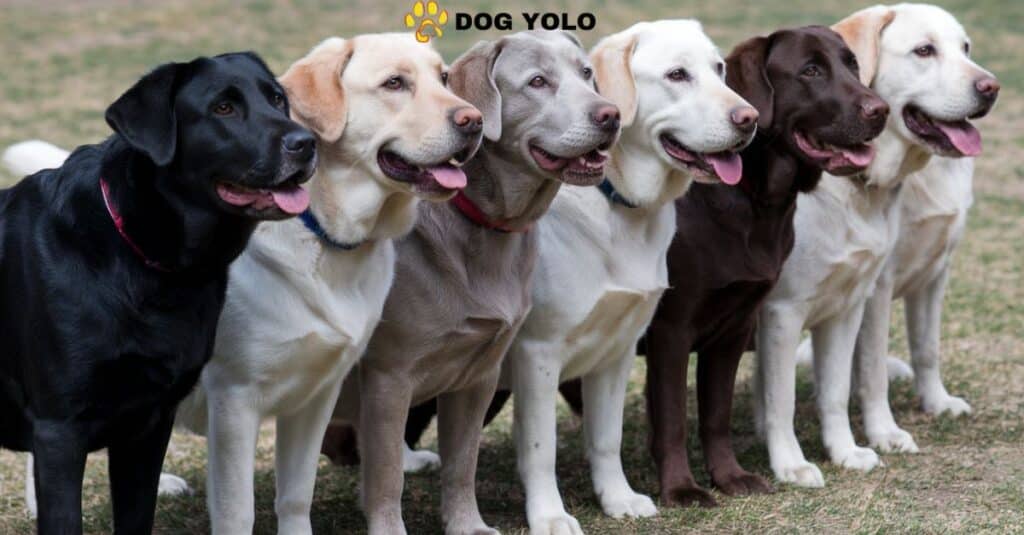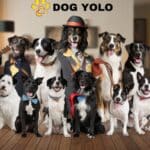Labrador Retrievers are one of the most popular dog breeds in the world, known for their intelligence, friendly demeanor, and versatility.
But have you ever wondered why Labradors come in so many colors?
In this article, we’ll explore all seven Labrador Retriever colors, diving into the fascinating genetics behind their coats. Whether you’re interested in the standard Black Lab or intrigued by the rare Silver Labrador, you’ll get a comprehensive understanding of the colors that make this breed so diverse.
The Genetics of Labrador Retriever Colors
When we talk about Labrador Retriever colors, we need to start with genetics. The color of a Lab’s coat is determined by two main genes: Eumelanin and Phaeomelanin.
These genes control the production of black, brown, and yellow pigments in the dog’s coat. However, it’s not just about these genes alone. There are also dominant and recessive genes that come into play, affecting how these pigments are expressed.
Read more about 25 Chow Chow Mixes
How Genes Determine Labrador Retriever Colors
- Eumelanin controls the black and brown pigments in a Labrador’s coat.
- Phaeomelanin controls the yellow and red pigments.
- There are three basic colors that most Labradors come in: black, chocolate, and yellow.
- However, genetic mutations like the Dilute Gene can create rarer colors, such as Silver Labradors or Charcoal Labradors.
This genetic framework creates a variety of Labrador Retriever colors, leading to some of the most striking coat hues seen in the breed today.
The Three Recognized Labrador Retriever Colors
Labrador Retrievers are best known for their three American Kennel Club (AKC) recognized colors: black, chocolate, and yellow. Let’s take a deeper look at each of these colors and what makes them unique.
Black Labrador Retrievers
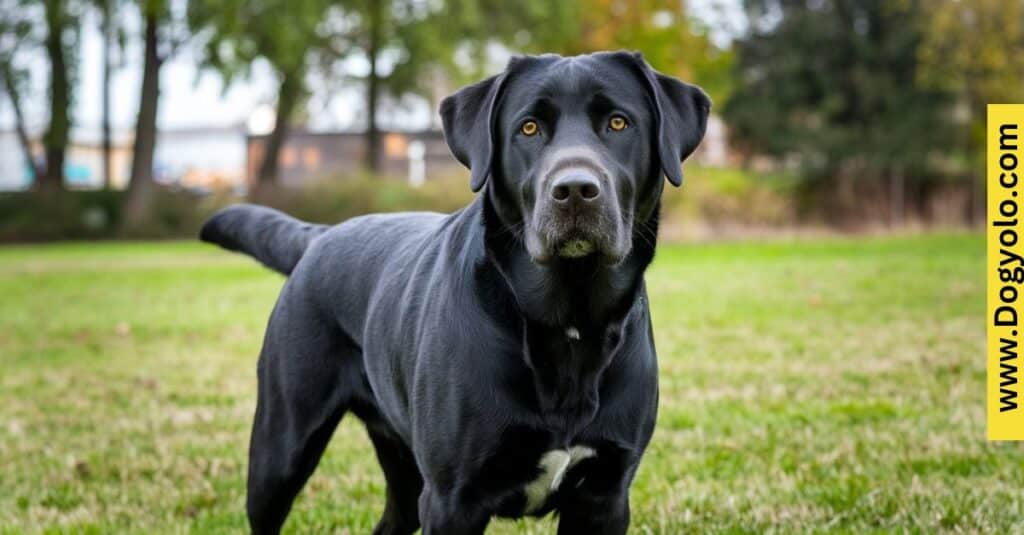
The Black Lab is probably the most iconic color for this breed. Black Labradors have a dominant black gene (BB or Bb), making black the most common color for Labradors worldwide.
- History and Popularity: Black Labs were the original color of the breed and are still widely favored today. Historically, they were especially prized as working dogs, particularly in hunting and retrieving.
- Genetics: The black coat is a result of dominant Eumelanin expression. A Black Lab can carry the recessive genes for chocolate or yellow, which can appear in offspring.
- Temperament and Traits: Black Labradors are known for their friendly, energetic, and trainable nature. They are often chosen as service dogs or police dogs because of their loyalty and intelligence.
Read more about Blue Heeler Australian Shepherd Mix
Chocolate Labrador Retrievers
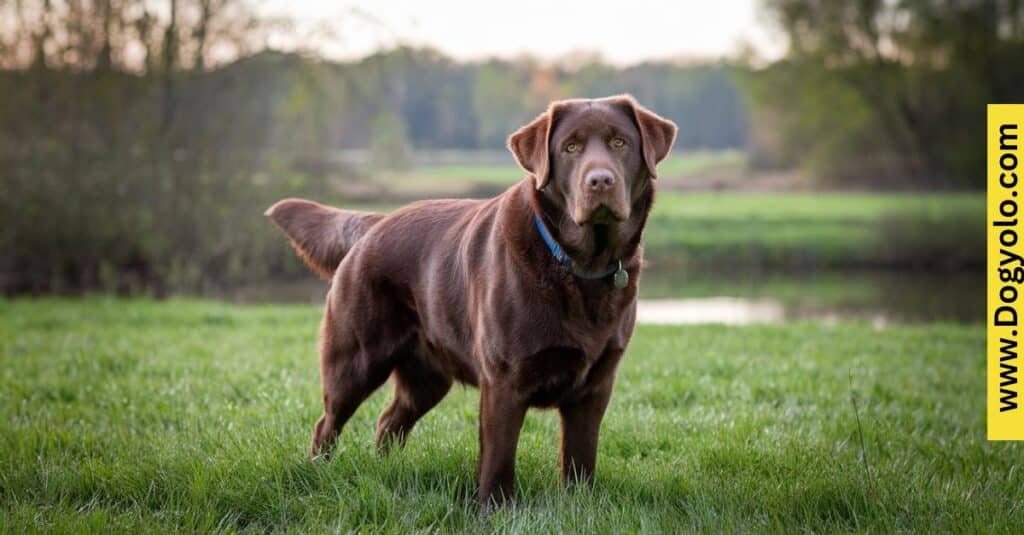
Chocolate Labs are known for their rich brown coats, which are a result of two recessive brown genes (bb). These brown Labradors are less common than black but are incredibly beloved by dog owners.
- Genetics: For a Labrador to be chocolate, it must inherit the recessive gene from both parents. If a Black Lab carries the chocolate gene (Bb), it could potentially produce a chocolate puppy.
- Common Myths: There’s a persistent rumor that Chocolate Labradors have more behavioral problems, but research doesn’t support this claim. In fact, many owners report that chocolate Labs are just as friendly and energetic as their black and yellow counterparts.
- Popularity: While not as common as Black Labs, Chocolate Labs have surged in popularity, especially in family homes due to their striking looks and playful personality.
Yellow Labrador Retrievers
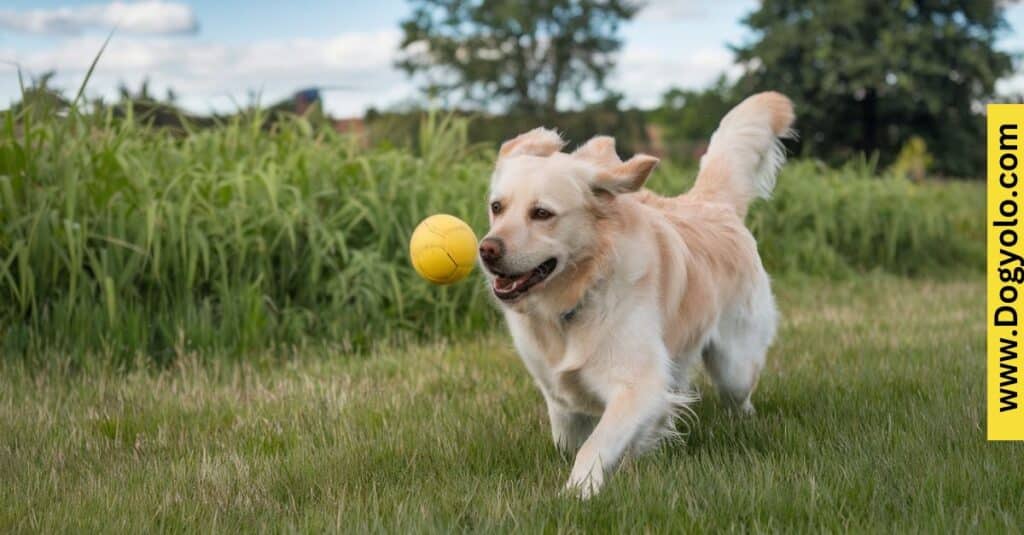
The Yellow Labrador is another highly recognized color, often associated with guide dogs and family pets. Their coat color can range from a pale cream to a darker, almost red shade.
- Genetics: Yellow Labs inherit the recessive yellow gene (ee), which suppresses the expression of black or brown pigments. Two yellow Labradors will always produce yellow puppies.
- Coat Variations: Within this color, there are many variations—from a light cream-colored Lab to a deep Red Fox Labrador. These differences come from additional genetic factors that control the intensity of the yellow pigment.
- Famous Yellow Labs: Many guide dogs are yellow Labradors, as they are known for their calm temperament and adaptability.
Read more about Cane Corso German Shepherd Mix
The Two Rare Yellow Variations
Beyond the standard yellow Lab, there are two rare and striking variations: Fox Red Labradors and Champagne Labradors.
Fox Red Labrador

A Fox Red Labrador is not a separate breed but a darker variation of the yellow Lab. It has a rich, deep red coat that many find stunning.
- Genetics: The gene responsible for this color is the same as the one that creates yellow Labradors, but with a Phaeomelanin variation that darkens the pigment.
- Controversy: The American Kennel Club accepts this color under the yellow category, though some argue that Fox Red Labs should be recognized as a distinct color.
Champagne Labrador
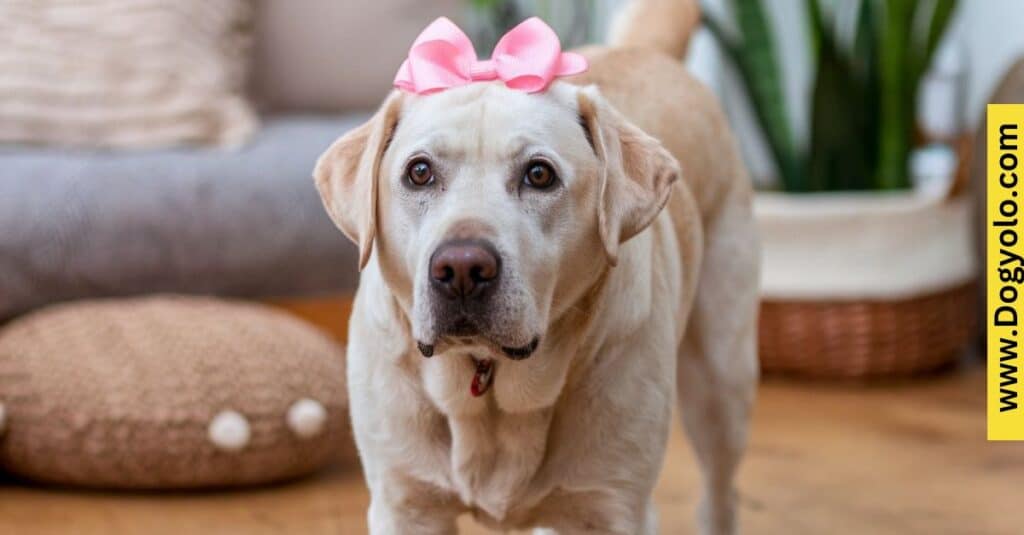
Champagne Labradors are a rarer variation, caused by the Dilute Gene (dd). This gene lightens the yellow coat, giving it a pale, champagne-like appearance.
- Genetics: The dilution gene, when present, dilutes the yellow pigment, giving it a faded or pastel look.
- Health Considerations: Dilute coats, including the champagne hue, are sometimes linked to skin issues like color dilution alopecia.
- Breed Standard Controversy: Like the Silver Labrador, Champagne Labs face controversy in the breeding community, with some kennel clubs not recognizing the color.
Read more about Miniature Husky
Labrador Colors Not Recognized by the AKC
While the American Kennel Club (AKC) only recognizes three Labrador Retriever colors, there are additional colors that arise due to genetic mutations. These colors may not meet breed standards, but they are still fascinating to explore.
Silver Labrador Retrievers
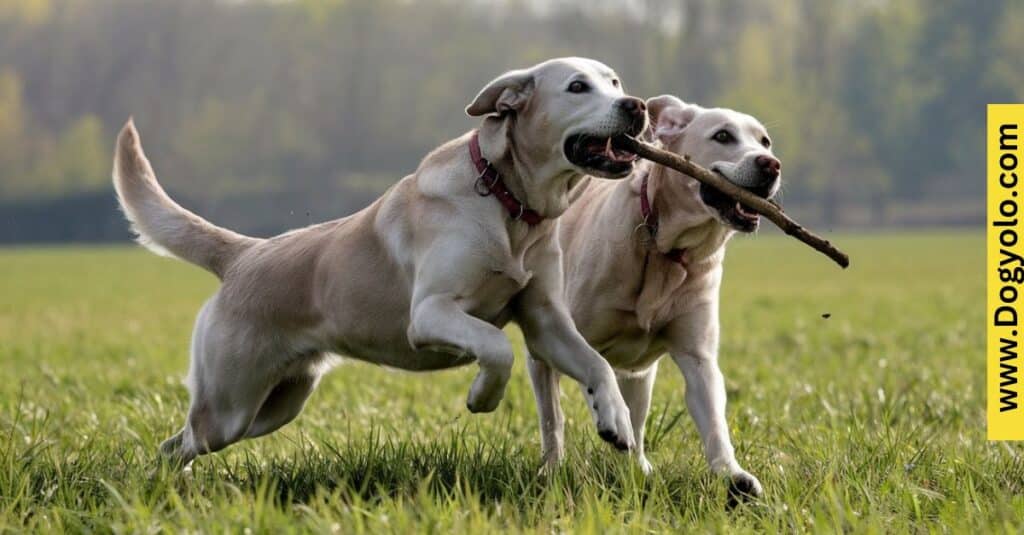
The Silver Labrador is one of the most debated color variations in the Labrador community. These dogs have a silver or grayish coat, caused by the Dilute Gene that lightens the black or chocolate color.
- Genetics: The silver color is the result of a dilution of the chocolate gene. Dogs with this color have a dd genotype, which dilutes the normal pigment.
- Controversy: Many breeders and Labrador enthusiasts argue about whether Silver Labs should be considered purebred Labradors. The AKC registers them as chocolate Labradors, but their unusual coat color sparks debate.
- Health Concerns: Like other dilute-colored dogs, Silver Labs may suffer from skin conditions related to the dilute gene, such as color dilution alopecia.
Charcoal Labrador Retrievers
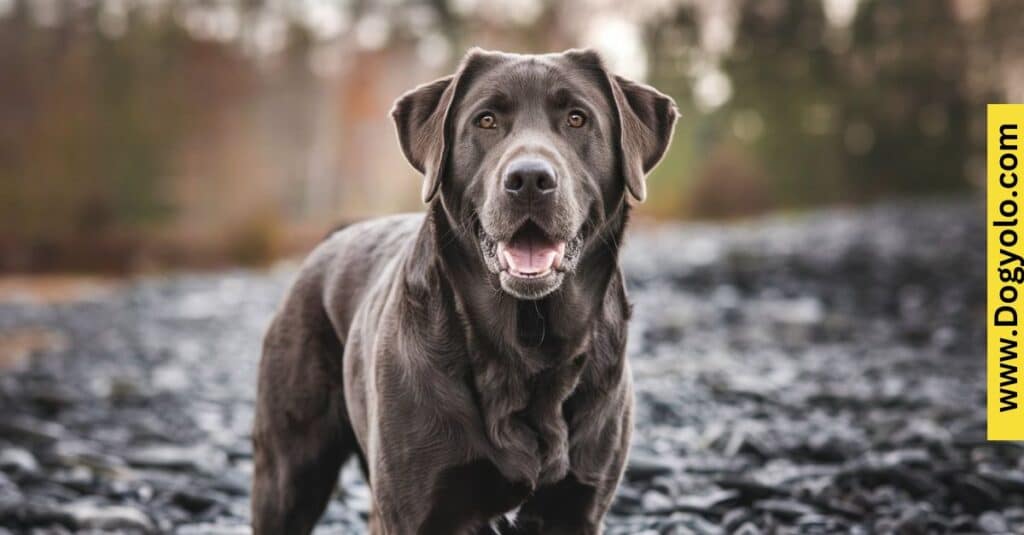
Similar to Silver Labs, Charcoal Labs are a result of the dilution of the black coat color.
- Genetics: The charcoal color is caused by the same Dilute Gene that creates Silver Labs. However, in this case, the gene dilutes the black coat to a grayish or charcoal color.
- Appearance: Charcoal Labs have a striking appearance, with their dark gray coats and lighter-colored noses.
- Recognition: Like Silver Labs, Charcoal Labs are not recognized by the American Kennel Club as a standard color.
Read more about 24 Pitbull Colors
The Role of Eumelanin in Labrador Coloration
One of the most important genes in determining Labrador Retriever colors is Eumelanin, which controls the black and brown pigments in a dog’s coat. Without Eumelanin, you wouldn’t have black or brown Labradors.
- Black and Chocolate Labradors: Eumelanin is what makes black Labs black and Chocolate Labs brown. If the Eumelanin pigment is fully expressed, you get a black coat. If it’s altered by recessive genes, you get a chocolate coat.
- The Dilute Gene: This gene plays a role in creating colors like Silver and Charcoal, which dilute the black or brown pigments.
Health Implications of Coat Color in Labradors
While coat color is a matter of genetics, it’s also important to consider the potential health implications. Some colors, particularly those caused by the Dilute Gene, have been linked to health issues.
- Color Dilution Alopecia (CDA): This is a genetic condition that can affect dogs with dilute-colored coats, such as Silver, Champagne, or Charcoal Labradors. It can lead to hair thinning, patchy fur, and skin issues.
- No Behavioral Differences: Despite myths that certain colors of Labs are more aggressive or less intelligent, research shows that behavior is not linked to coat color.
Breeding for Color
Breeding Labradors for specific colors, particularly rare ones like silver or charcoal, can be controversial. Breeders should always prioritize health and temperament over appearance to ensure the well-being of the dogs.
Conclusion
Labrador Retrievers are an incredibly diverse breed, with coat colors ranging from the traditional black, yellow, and chocolate to rare hues like silver and charcoal.
Understanding the genetics of Labrador Retriever colors helps breeders and owners appreciate the complexity behind these beautiful coats.
Whether you’re drawn to the classic Black Lab or fascinated by the rare Silver Labrador, each color has its own unique history, traits, and genetic background.
By learning about these Labrador Retriever colors, you’ll be better equipped to make an informed decision when choosing the right dog for you or your family.
FAQs
What is the most common color of Labrador Retrievers?
- The most common color is black, followed by yellow and chocolate.
Can two Black Labs have yellow or chocolate puppies?
- Yes, if both Black Labs carry the recessive gene for chocolate or yellow, they can produce offspring in those colors.
Is coat color linked to health issues?
- Generally, coat color does not affect health, but dilute-colored Labradors (like Silver or Champagne) may be prone to Color Dilution Alopecia.
By understanding these different colors and the Labrador Retriever genetics behind them, you’ll gain a deeper appreciation for one of the world’s favorite breeds.

Vala John is an experienced blogger at Dog Yolo, where she shares her deep passion for all things canine. With years of expertise in dog care, training, and lifestyle tips, Vala’s writing helps dog lovers build stronger bonds with their furry friends. Her insightful posts make her a trusted voice in the pet community, offering practical advice for dog owners of all levels.

